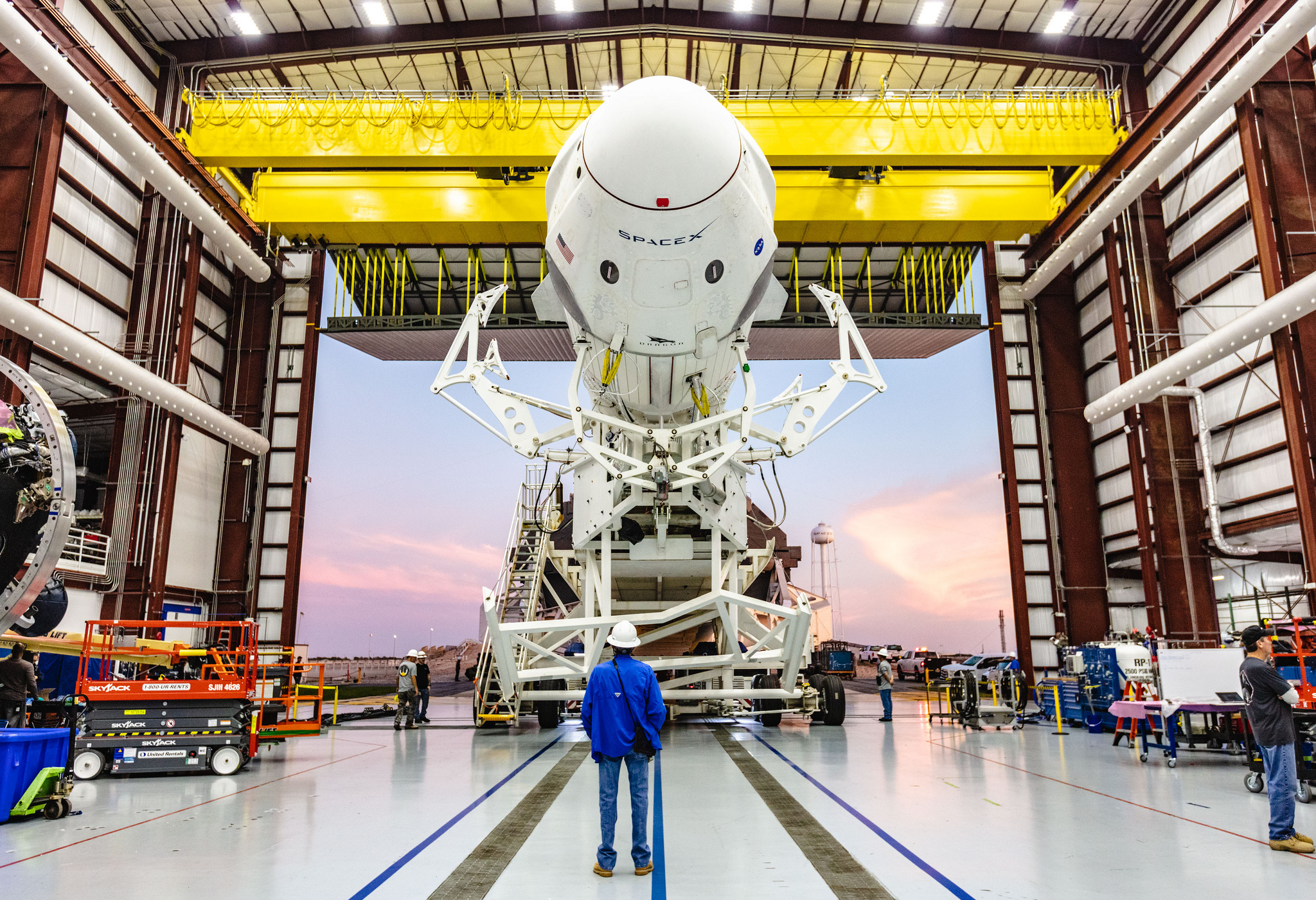On Thursday afternoon at Kennedy Space Center in Florida, SpaceX performed a hot-fire test of the Falcon 9 rocket that will fly its first commercial crew demonstration mission. This flight will not carry crew members but will serve as a test of the launch system, Crew Dragon spacecraft, and the company's ability to dock the vehicle safely with the International Space Station.
More than two hours after the 4pm ET test—in which the rocket's first stage engines are fired for several seconds to simulate liftoff while the rocket is clamped down—SpaceX had yet to confirm whether the test was successful. Some early reports indicated the test did not undergo a full firing, which may or may not be a problem.
Thursday's act of firing the rocket, which will now be returned from the launchpad to SpaceX's Horizontal Integration Facility at the company's Florida site, nevertheless represents a significant step forward for SpaceX and NASA.
Typically, such a firing occurs one to two weeks before the launch of a rocket. NASA and SpaceX, however, have yet to confirm a launch date for the mission. The current public no-earlier-than date for the flight is February 16, but sources indicated to Ars that, in terms of internal planning, the current NET date is February 23.
Readying Dragon
Before a formal launch date is set, officials with the company and space agency must still give the mission a green light during a final review process. These reviews will proceed despite the partial government shutdown, as key NASA personnel designated for the commercial crew program are continuing to work without pay in support of the flight.
The rocket, of course, is a critical piece of the commercial crew mission. However, for these flights, the more substantially changed piece of hardware is the spacecraft, a significantly upgraded version of the Dragon vehicle SpaceX has used to supply the space station since 2012.
In addition to life-support systems that can support up to seven astronauts, the Crew Dragon has several key upgrades that must be tested in spaceflight, such as solar panels built into the spacecraft rather than extended panels.
Provided this first demonstration mission proceeds as intended, SpaceX and NASA would spend the next several months reviewing data about the rocket and spacecraft's performance before moving toward a second crewed demonstration flight. Conceivably this mission could happen as early as July, but, more likely, the flight of NASA astronauts Doug Hurley and Bob Behnken would occur sometime later in the summer or early fall.


